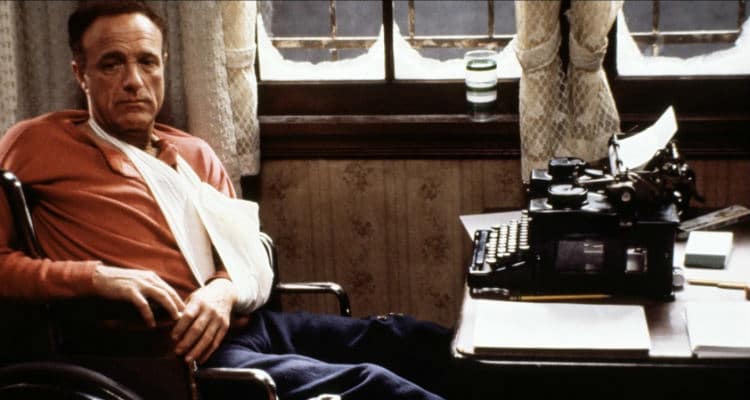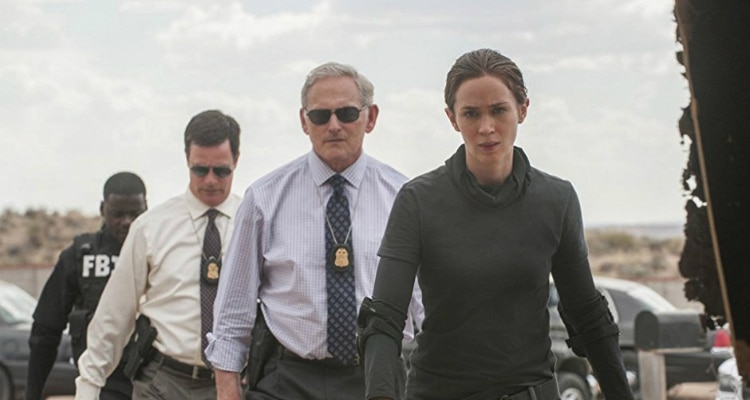Scriptwriting 101: The Ultimate Guide to Writing a Script
So, scriptwriting it is…
Delving in for the first time can be a little bruising, from the prescriptive formatting to the all important question: how do I tell this story?

From idea to planning to page to full-length script, there are mountains to climb at every stage…
The Scriptwriting Idea:
At first glance, this may seem like the easiest part of scriptwriting. The beautiful seed motivating you to start writing in the first place. However, before pen hits paper or finger hits key, there are important considerations to make.

First, can you pitch it?
Not necessarily in a room, at a person, but more generally: how concisely can you get your idea across?
This is important for two key reasons:
- The clearer the idea, the better it will translate to the page.
If explaining your idea on paper or to a friend takes you down multiple conceptual cul-de-sacs and has you constantly backtracking to clarify key details, the likelihood is the idea isn’t ‘ready’ yet.
- Down the line, that pitch, that logline (a pithy sentence capturing the story) or treatment (a few pages outlining story, character and tone), might be the difference between getting your script read and getting nothing.
This is why so much stock is placed in ‘high-concept’ ideas (i.e. stories in which the draw is the premise, rather than character, execution, theme, tone and so on.) It’s the difference between STAR WARS and PATERSON).
Essentially, it’s far easier to break down a high-concept idea than it is a character piece.
This isn’t to say that your rumination on the complexities of life as an out-of-work furniture salesman needs shelving, just that it becomes all the more important to nail down the specifics of the idea ahead of time.
Know Your Story:
There’s that ubiquitous quote that’s often attributed to Mark Twain:
Write what you know.
But it’s often taken a little too literally, confining writers to their own experiences and potentially hampering imagination. It’s perhaps better to look at it the other way around: know your story.
You can be as sure as anything about that core premise. About the top-level bureaucrat who discovers an underhand government scheme to launder money through state-run daycares.
However, if you’re hazy on:
- The way she speaks
- Where she’s come from
- Her backstory before the film starts
- Why she does what she does
- Whether people like her
- Whether she’s lonely
- What her innermost turmoil is
- How the world works
- What type of government it is
- Why they chose daycares
- What the side effects of this madcap scheme might be…
…even if these things are never directly stated… that blank sheet of paper might as well be a brick wall.
Know your story. Know your world inside and out, even the extraneous details you think no-one will care about, and writing it becomes ten times easier.
Tailoring the Scriptwriting Idea:
So you know your world; you know your characters; you know your story. This is where we hit the broader considerations:
- Who’s this story for?
- What’s it trying to say?
- What’s the best way of telling it?
Who’s it for?
It’s easy to dismiss the first of these as sliding on that cold, intellectually-inhibiting ‘marketing hat’, but there’s more to it than that.
It’s about tone and execution.
Take a simple premise: A law enforcement recruit faces internal prejudice as she takes on the first make-or-break case of her career.
That sentence applies just as well to ZOOTOPIA as it does SICARIO.

It’s an exaggerated example, but the point is that the same base story can be told a million different ways for a million different people, and if you don’t decide which you’re going for, your script is doomed to meander aimlessly.
Plus, actually putting that marketing hat on for a moment, it’s essential to know your audience.
Is your film about once-successful businessmen struggling to come to terms with middle-age and the rise of younger, more determined competition likely to appeal to teenagers? Perhaps not, so that extended gross-out comedy scene in the romantic subplot that could alienate an older viewer is probably worth leaving out.
Again, an exaggeration, but it illustrates the point: deciding who we’re aiming at affects the course of the story itself.
As Robert McKee puts it:
“You must shape your story in a way that both expresses your vision and satisfies the audience’s desires.”
…which you can’t do if you don’t know that audience in the first place.
And, speaking of vision…
What’s It Trying To Say?
Perhaps your story about a single mother struggling to look after her ill daughter seeks to examine the cold, unflinching reality of that situation.
Perhaps it aims to introduce some complex themes in a more colourful, accessible, humorous way.
Maybe it takes on a political slant, casting her struggle within the structure of a particular place or period to highlight some societal injustice.
Maybe it’s more broadly funny, playing on an emotionally bleak situation to foster some pitch-black comedy.
Choosing Your Angle:
We can’t really do all the above in one script, and trying to do so gives us a nebulous mess.
This illustrates the importance of choosing an ‘angle’ from which to tell the story. The same scene can play wildly different depending on which you choose.
Continuing with the single mother example above, the angle from which we tell the story determines whether a scene in which she, say, attends a job interview:
- focuses on her struggling through it, exhausted by her parental duties.
- casts the interviewer as a comedically pompous idiot, who thinks they’re one-upping her with difficult questions that actually make next to no sense.
- has her turned down despite her clear skill because of her family situation and the time it takes up.
- has her come up with some underhand plan to con her way into the job.
The core ‘event’ of the scene itself may be identical – she goes up for a job, she doesn’t get it – but the way in which we approach it is hugely formed by the overall intention of the story.
What’s the Best Way of Telling It?
This is a little more concrete. This is where we get to the importance of structure in scriptwriting.
Structure:
On a broad scale, this involves adhering to the oft-touted three act structure, in which, simply put, we have:
- A first act setting the scene, establishing the protagonist and main character and concluding with an ‘inciting incident’, a major event that kicks the story into gear.
- A second act in which our protagonist faces challenges in pursuit of their central goal. They may come close, only to fail and hit their ‘lowest point’.
- A third act in which the story reaches its climax as the protagonist faces their final challenge and brings about a resolution to the events of the narrative.
But it has narrower implications too. Slapping a three or five-act structure onto your story isn’t enough – the moment to moment structure has to serve the overall narrative and its characters.
So, MEMENTO is structured backwards to induct the audience into Leonard’s unique perspective, a perspective in which he can never remember what just happened to him.
But structuring, say, STAR WARS backwards would be an ill-advised gimmick, because it doesn’t serve the story or the characters in it.
Opening STAR WARS with the image of a star destroyer bearing down on a rebel ship before we get into Luke’s story, however, is a good structural move, serving the overall story by ensuring we have our overarching conflict (and some solid world-building) in place before we chuck the protagonist into it.
The structure has to serve the story, not the other way around.
Writing your Scriptwriting Idea:
These decisions made, it’s time to put ink on paper. It’s important to remember to:
Be Visual
As Alfred Hitchcock puts it:
“A lot of writers think they’re filling the page with words, but they’re filling the screen with images.”
It may seem obvious, but it’s the key thing to remember in scriptwriting: you’re writing prospectively. The stack of pages you have when you’re done is not the finished product.
This has some pretty big implications for the act of scriptwriting itself, perhaps the most obvious being that whatever is on the page actually needs to translate audio-visually.
There’s always a temptation to let scriptwriting slide into a more novelistic style, whereby characters’ thoughts and backstories are mentioned offhand in description.
And, to be fair, there isn’t a blanket ban on that.
Screenwriters like Shane Black and Paul Schrader like to use little omniscient details to enhance the readers experience of the script. A script is, after all, always read before it’s seen.
But there’s a fine line to walk here. Telling us in description that your protagonist has a dark past and doesn’t suffer fools gladly isn’t enough.
In fact it’s dead text if that past doesn’t come back to haunt them and there aren’t actual fools to not suffer.
The next trap is to respond by placing that information in dialogue, and this is where we come to the most ubiquitous of screenwriting mantras:
Show, don’t tell.
In scriptwriting, we can’t rely on characters’ stated thoughts and feelings. Telling us someone is angry is pretty much useless. Having them passive-aggressively lash out at a loved one or trash an RV, on the other hand – that gets the message across.
Be Concise:
The screenplays that work best tend to be those that are able to convey a lot with a little, those able to separate the essential from the extraneous.
But when we have such great, long scenes like the openings of THE SOCIAL NETWORK or INGLOURIOUS BASTERDS, it’s easy to fall into the trap of assuming that drawing things out can heighten their effect.
That’s confusing concision with brevity.
Those scenes may be long, but every detail has purpose. Each line moves the scene forward.
A good rule of thumb when it comes to writing a scene is to come in late and get out early.
There’s a reason THE SOCIAL NETWORK opens mid-conversation rather than with Mark and Erica sitting down for their drink.
There’s a reason we conclude the opening of INGLOURIOUS BASTERDS with Landa bidding farewell to Shoshanna, rather than seeing the aftermath of the gunfire in the farmhouse and hearing his next orders to his men.
These details would do nothing for the story. As William Goldman puts it:
“I never enter scenes until the last possible moment… and as soon as it’s done I get the hell out of there.”
Be Vigilant:
If there’s anything more daunting than looking at a blank page, it’s looking at a hundred, so it can help to set up a routine to keep you’re scriptwriting going.
For some it’s easiest to set aside a certain amount of time each day, an hour in which to focus purely on scriptwriting.
For those with a little more time to spare, it can prove more effective to set yourself a more specific target, be it completing a scene each day or even churning out a certain number of pages every week.
The specific approach doesn’t matter. What’s important is ensuring it becomes a consistent habit.
Get Feedback and Rewrite… A Lot
As Terry Pratchett said:
“The first draft is just you telling yourself the story.”
And likelihood is, it won’t be great, but that’s OK. That’s where everyone else comes in.
Show the script to friends, family, other writers, or even get a professional opinion.
A script consultant can help polish your draft and highlight strengths and weaknesses with suggestions on how to correct them. Or tell you if an idea is worth pursuing or giving up.
- What did you think of this article? Share it, Like it, give it a rating, and let us know you though in the comments box further down…
- Struggling with a script or book? Story analysis is what we do, all day, every day… Check out our range of script coverage services for writers & filmmakers.
